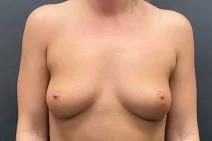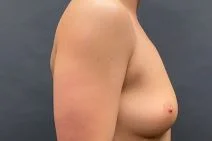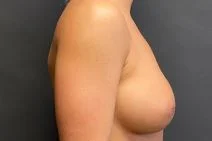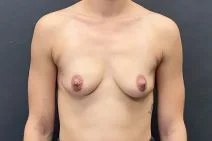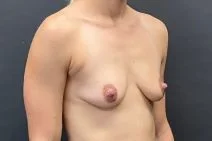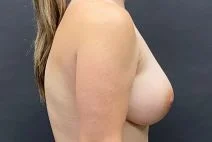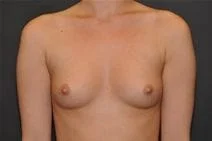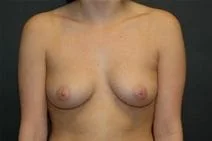Breast Augmentation
Breast enhancement with either saline or silicone prostheses remains one of the most consistently high satisfaction surgeries available. Saline prostheses have the advantage of a smaller incision for placement and no need for prosthesis monitoring. Silicone implants do require monitoring as per FDA recommendation, which consists of a breast MRI at least every 3 years. In addition, the age requirement for silicone prostheses is 22.
A recent development in the field of breast implant surgery has been the withdrawal of textured prostheses from the marketplace in 2019 due to rare associated anaplastic large cell lymphoma (ALCL). Currently the incidence of ALCL in the United States is 1:30,000. For women with textured prostheses, the FDA does not recommend prophylactic removal; however, monitoring for symptoms such as unexplained significant breast swelling or the development of a breast mass requires evaluation.
Smooth-walled prostheses, either saline or silicone, have been available for decades and provide predictable and beautiful results. The majority of patients have submuscular implant placement; however exceptions are made for body builders and patients with tubular breasts for whom the implants are placed in the subglandular position. Choices for incision placement are around the areola (periareolar) or underneath (inframammary). For women with droopier breasts, the periareolar approach is a consideration. For flat-chested women, the inframammary approach is more of a consideration. The best implant selection and the best method of placement require a thorough examination, measurements and evaluation by Dr. Lindsey. Important variables that come in to play to assure the best result include existing breast size and shape, height, weight, and body frame. The patient's desires are paramount. Dr. Lindsey has the ability to provide appropriate comparisons with similar patients so that realistic goals can be established.
The recovery from cosmetic breast implant surgery is substantially improved in recent years with routine use of PEC1 and serratus anterior plane ultrasound-guided regional anesthetic blocks at the time of surgery using very long-acting (72 hour) injectable anesthetic agent (liposomal bupivacaine). With these state-of-the-art techniques, recovery is much more comfortable, and most patients use Tylenol and Celebrex, neither of which is an opioid.
As with any surgery, Dr. Lindsey will have to take a history and perform a physical examination. Patient safety is priority one. Dr. Lindsey and his team are here to assist you making a fully-informed decision and to deliver the beautiful result you are looking for.


